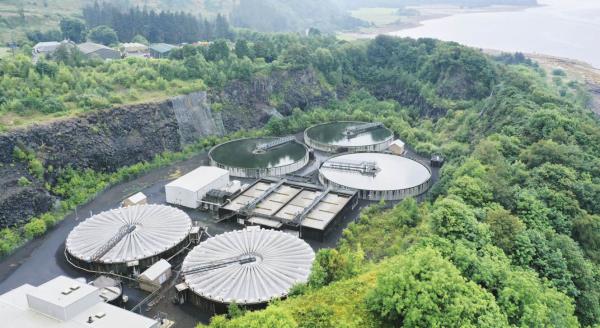08 August 2023

The UK’s waste water industry has been under scrutiny because of the impact of sewer overflows and unconsented discharge – and the resulting pollution – on communities, wildlife, and the environment. Waste water treatment is essential to a healthy environment, but for utilities, the challenge is how to maintain and improve treatment standards at a lower cost.
Preserving Scotland’s water resources
Scottish Water is responsible for preserving and sustainably managing the country’s water resources, and ensuring an affordable water supply and reliable waste water disposal.
Scottish Water sought to move from a scheduled maintenance approach to preventive maintenance, with a solution that would improve maintenance efficiency and reduce the risk of downtime in its treatment plants, which in the worst case could cause the overspill of sewage into natural water bodies.
Siemens’ condition monitoring solution, designed and implemented in cooperation with several partners, serves as a lighthouse project for preventive maintenance. The main objective was to prevent unplanned asset and plant downtime in Scottish Water’s waste water treatment plants. By monitoring the condition of assets with advanced algorithms and using real-time data, plant operators can know in advance when an asset is likely to fail due to wear or damage, providing the opportunity to proactively fix the issue before an unexpected breakdown occurs.
Preventive maintenance is an essential tool to increase plant availability and asset reliability – but it is also a lever to reduce operational costs. The ability to schedule maintenance allows plant operators to reduce expenses for overtime work to repair a critical asset and for the expedited delivery of spare parts. In waste water treatment, there are some assets that are critical to plant operation, so when these assets fail, waste water must be transferred to another plant or transported in and out while the plant is unable to process it. Preventive maintenance will significantly reduce or eliminate all these costs associated with unplanned downtime.
Moreover, monitoring asset health brings additional benefits such as greater transparency into energy consumption and energy efficiency, helping plant operators cut their costs even more.
Facilitating digital transformation
Today, most assets in waste water plants are run to failure. One reason for this is that utilities are often concerned about the risks associated with introducing digital technologies into their operations – in some cases due to a lack of in-house resources for digitalisation and IT/OT integration.
To enable the digital transformation of its operations, Scottish Water needed technology that was scalable, secure, and easy to install, providing cost-effective monitoring on critical national infrastructure. Accordingly, Siemens delivered the Siemens Xcelerator business platform, which supports its partners and users with a curated portfolio of hardware, software and services, a partner ecosystem, and a marketplace that speeds up value creation through digitalisation in industry, buildings, grids, and mobility.
Together with Capgemini and Processplus, Siemens designed a solution that can be easily transferred and scaled up for other plants and systems. What should drive the design of any predictive maintenance solution is an assessment of how critical an asset is to the process, followed by identification of the ways in which the asset could potentially fail. The monitoring solution should then ensure coverage of those failure modes. Siemens has codified this insight into a series of templates that reduce the deployment effort at future sites in Scotland or for any other waste water operator. The solution helps Scottish Water embrace predictive and preventive maintenance to avoid asset failures and enables advanced process optimisation.
“The system has been up and running now for just a few months, and we are already starting to realise some of the benefits, having months of early warning on our critical equipment, our pumps, and our aerators,” said Ross Brand, program manager at Scottish Water.
As a result, Scottish Water is confident that the investment will enable it to meet its targets of a 5-15% increase in asset life and a 10% reduction in the cost of responsive asset repairs. The project has not only provided Scottish Water with an open, easy-to-implement condition monitoring system, but the solution can also be scaled up to include more plants and assets. To date, more than 350 assets at 17 sites have been connected to the condition monitoring solution, and more will follow shortly.
“This type of collaboration and being able to work with the technical expertise of Siemens helped us to deliver a scalable solution that we can now take across multiple assets, in both water and waste water,” said Nathan Wield, waste water operations manager at Scottish Water.








